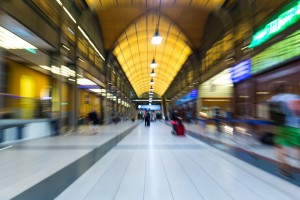How are trains secured?
There are multiple levels to transport security these days. There are planning and response elements, physical security personnel (security guards), and mechanisms that aim to deter or prevent a threat (locking mechanisms, intruder detection, cameras etc). Metros tend to have two types of locking mechanisms. First is electronic locks that control the braking systems, exterior doors, and online threats. The second form of security is physical locks that secure the cabin and exterior doors.
Why is security Important on Public Transport?
Due to the increased risk of threat to the public, specialized units within public transport sectors have been formed. These units monitor transport stations, as well as carriages themselves. They face serious challenges however, one of which is that it is an open system. In other words, it must be open to customers, which presents a security risk inherently. Furthermore, it moves large numbers of people at a time, which means if something happens, there is a huge risk to human life and property. Normally when transportation is disrupted by a security threats, the operator is not usually targeted, but it is the state itself. This means that the goal of the security threat is to disrupt operations, and instill fear on as large of a scale as possible.
To combat this, it is important to have proper measures in place that aim to both respond to, and also premeditate a threat. They should take into account every possible scenario and have a counter measure/plan, no matter how unlikely the incident is of happening.
Cameras and Locks
When it comes to detectors and deterrents, transport stations primarily rely on cameras and locks. Cameras are used by security personnel to detect known threats, identify problems as they happen, and watch for generally suspicious behavior. These high tech CCTV (Closed Circuit Television) systems are crucial in identifying threats even if an incident occurs. These high end cameras are purchased through a number of CCTV suppliers and include household names like Samsung and Honeywell, who are known for their quality.
Locking mechanisms are used to secure doors and other areas with restricted access. They come in primarily two different types: standard pin locks, and electronic locks. While electronic locks are becoming more prominent, they still have some major flaws that sometimes make the pin lock a more viable option. For instance, electronic locks have been easily compromised by faulty electric systems, malfunctions in their software, or even poor craftsmanship that has allowed them to be bypassed using physical force. For this reason, many transport companies still secure the majority of their off limits areas with old fashioned pin tumbler locks. These are more reliable but can also be bypassed by someone who knows what they are doing. For all locks to be installed, whether electronic or otherwise, the expertise of a professional locksmith company like findlocksmiths.org will be sought out. Companies like this usually will contract out to a particular transport company and service all of their areas. However this is only done if the locksmith company in question has a sterling reputation, and has vetted all of their technicians.
While locks are meant to secure off limits areas, they also allow for crowd control. For instance, the turnstiles in subway stations are considered locks, because they keep people who have not paid for a ticket out of the subway platform. Furthermore, they control the flow of the crowd and keep things safe and orderly.
In-Depth Analysis of Transportation Security: Full Video
